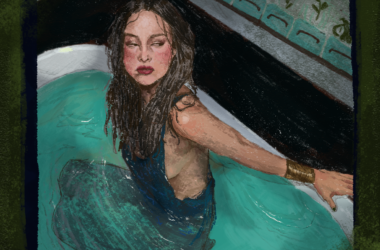On June 16, Beyoncé and Jay-Z released their surprise joint album, Everything is Love. That same day, they shared the music video for the the album’s second track “Apeshit,” filmed entirely at the Louvre. The video features acclaimed works from the famed gallery, including Mona Lisa, The Coronation of Napoleon, and Venus de Milo. The audience follows the Carters showcasing their wealth and success, acknowledging the sacrifices of those before them, and crooning “This is what we’re thankful” in the song’s chorus. The Carters defy the colonial history of artworks in the Louvre: They challenge the Louvre’s Eurocentric art by showcasing the beauty of people of colour and re-contextualizing famous Western art.
Works such as the Mona Lisa are often seen as timeless and classic images of beauty, but Beyoncé and Jay-Z challenge this notion with their very presence beside the famed painting. The video’s opening depicts the Carters standing regally in front of the painting, stealing La Joconde’s spotlight. The Mona Lisa is even on the album’s cover, where it is foregrounded by a black couple holding an afro pick. By cleverly paralleling the work’s fame with their own, the Carters demonstrate that black excellence can be just as formidable as the Mona Lisa herself.
Given the lyrics’ focus on the Carters’ extreme wealth and influence—Beyonce sings of “expensive fabrics” and “expensive habits”—the Louvre seems like an appropriate setting for the video. The Louvre is one of the most influential museums in the world and draws millions of visitors each year. However, it doesn’t take an art history buff to realize that such institutions fail to represent people of colour both as subjects and as artists. When people of colour are the subjects of works of art, they are often fetishized: Portrayed as uncivilized and, at times, dangerous. An example is Paul Gauguin’s Barbarous Tales which depicts two naked tahitian women, one of many of the artists’ racially stereotyping images trying to paint the “primitive” landscape of the French Polynesia.
“Apeshit” also forces us to re-examine Jacques-Louis David’s The Coronation of Napoleon: An image revered for having captured the crowning of the imperial family. The painting illustrates a moment of glory for Napoleon, and simultaneously ignores Napoleon’s expansion of French colonial land in the Middle East and Africa. Beyoncé and her dancers—all women of colour—dance in a line in front of the painting, which shows their defiance and strength by swaying in solidarity. Beyoncé is at the centre: It is her inauguration.
Beyoncé and Jay-Z defy the reign of white art, which changes how we see symbols like the Mona Lisa and The Coronation of Napoleon. “I can’t believe we made it,” Beyoncé rejoices in the chorus. She is referring not only to her own family’s success, but also to people of colour finally showcasing their art—and themselves—in the Louvre. They change the nature of the museum to represent their own artistic landscape. In so doing, the Carters are as timeless as the centuries-old artwork around them.









